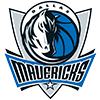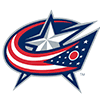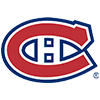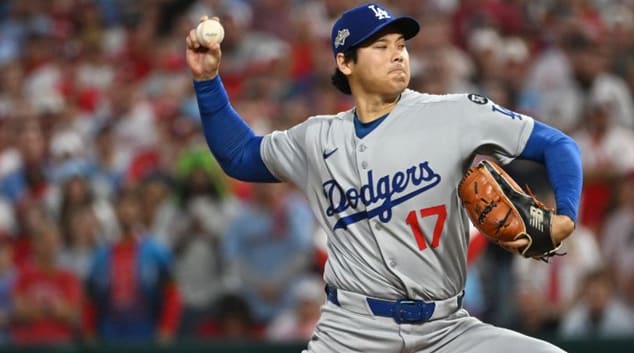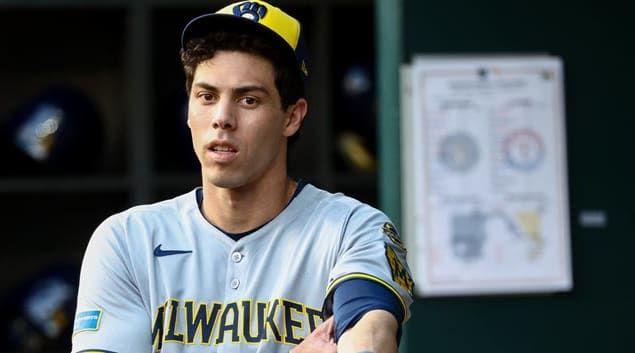Let's look at a few of my favorite metrics:
HITTERS
BABIP
Historical league average BABIP: approximately .300.
As mentioned in the opener, I find BABIP to be useful, but a bit overused. Often I'll read/hear generalizations such as "Smith is hitting just .210, but with a .230 BABIP, his average is guaranteed to rise over the course of the season." Sure, it probably will rise, but "guaranteed" is a word that scares me. What if the player ran like Benji Molina and had historically posted BABIPs in the .250 range? Speaking in generalities, if a batter has a BABIP well above or below .300, we can anticipate that number trending in the direction of the league average.
This year, take someone like Troy Tulowitzki. If the season ended today, he's easily the NL MVP with a .408/.512/.768 batting line. Tulo's BABIP though sits at .413, making it obvious that he won't be able to maintain the lofty batting average over the course of the season. Of course we knew that, as the last time a hitter batted .400 was, of course, Ted Williams in 1941 (.406). What is Tulo's floor, though? We know that when he's healthy, he is among the league's elite hitters, but from 2010-2013, Tulowitzki averaged just 110 games. His career BABIP sits at .323, so we shouldn't expect a regression to .300 necessarily. He's just 29, so if healthy, we can probably expect him to at least approach .315 (his career high, 2010) the rest of the way. With a career-high 17.8-percent walk rate, Tulowitzki is averaging just 3.3 at-bats per season, so if we use that rate and assume he plays in 150 games while hitting .315 the rest of the way, Tulowitzki will finish with a .334 BA and likely win the MVP as long as the Rockies are at least competitive.
A couple other examples to illustrate how best to utilize BABIP:
Take speed into account - Dee Gordon is batting .342 with a .400 BABIP. That BABIP probably is not sustainable, but as long as Gordon can avoid hitting too many balls in the air, his legs give him at least a fighter's chance at a .350 BABIP and .300 BA.
Look at non-speedsters with low BABIPs - A couple that stand out to me are Carlos Santana (.154 BABIP, .150 BA) and Curtis Granderson (.233 BABIP, .185 BA). Santana has four HR in 105 PA, so the power is still there, and he's drawing walks at a high rate (19.5 BB%). He's also striking out at a relatively low rate (18.8 K%). Santana's low BA and BABIP appears to be driven by a career-low 11.4-percent line drive rate. Simply, he's not hitting the ball hard, and with his lack of speed, that's not helping his BABIP. I think he's a solid buy-low.
Granderson, meanwhile, is not finding the NL to his liking, batting just .185/.288/.306 with three home runs in 125 PA. With a .233 BABIP and 11.2-percent walk rate, Granderson is a good buy-low. He is also 7-for-16 in his last four games, so that buying window may be closing somewhat. It also feels like fantasy owners are applying the Jason Bay label to Granderson. Bay, of course, signed a similar contract to Granderson - four years, $66 million - and then proceeded to earn $2.5 million per home run over the course of his deal before landing in Seattle last year and ultimately retiring. Granderson hit just .232 and .229 in his final two years as a Yankee, and with the removal of the short porch in right field, no more 40-HR seasons can be reasonably expected. That said, he's not quite this bad, so consider targeting him in NL-only leagues.
HR/FB%
This one is a good one to look at for pitchers as well, as generally the rate hovers in the 11-percent range for both. Here you will want to look for rates significantly above (HRs will go down) or below (more HRs coming) 11 percent. Red-hot rookie Jose Abreu has a ridiculous 35.4-percent mark so far this year, making it highly unlikely he'll be able to maintain his 55-homer pace. Other oddities to highlight:
Nate Schierholtz - Schierholtz has a relatively high 42.7-percent flyball rate, but exactly zero of his flyballs have left the yard. That has to change, right?
Alex Gordon/Eric Hosmer - The Royals might start seeing more long balls soon, as both Gordon (2.4 percent) and Hosmer (2.6 percent) have been home run challenged.
David Wright - He's never been a big bopper per se, but with a 2.9-percent rate, Wright is due for a few home runs at some point.
Carlos Gonzalez - Just 29.9 percent of Gonzalez's batted balls have been hit in the air, but a solid 20.7 percent have gone for home runs. Gonzalez also has a career 18.8-percent HR/FB rate, so this year is no high outlier by any means. Now if he can just drive up his flyball rate, the home runs may come with more frequency.
BB% - Walk Rate
Definition: Walks as a percentage of plate appearances.
2014 league average: 8.3 percent
This one is pretty straightforward. All things equal, though most leagues use batting average over on-base percentage as a scoring category, you want players who draw walks. There are extremes, of course, as while Adam Dunn posted a 16.2%-percent walk rate in 2012, he also hit .204 that year while striking out in more than a third of his plate appearances. Generally, the more selective a hitter is at the plate, the more hitter-friendly pitches he will swing at, thus allowing for a higher on-base percentage, which leads to runs scored. An interesting note in looking at the 2014 data, if you take the 186 hitters with enough at-bats to qualify for the batting title and sort based on BB%, you get the following results:
| GROUP | BB% | BA |
| Top 93 | 12.0 | .264 |
| Bottom 93 | 5.5 | .268 |
The more aggressive hitters ended up with the higher collective batting average. We can find a pair of extreme examples on the Cardinals, with Matt Adams (.328 BA, 2.4 BB%) and Yadier Molina (.331 BA, 3.2 BB%) finding success despite being hackers. Generally, though, I prefer a more patient approach.
K% - Strikeout Rate
Definition: Strikeouts as a percentage of plate appearances.
2014 league average: 20.6 percent
I won't spend much time here, as this one is pretty straightforward. The less a hitter strikes out, the more frequently he puts the ball in play, giving him more chances to reach base and contribute to your fantasy team. This is why I tend to avoid guys like Adam Dunn outside of OBP leagues, as while the power numbers are nice, the batting average drag on your team is too much to stomach, at least for me.
PITCHERS
xFIP vs. ERA
xFIP attempts to take a forward-looking approach at how a pitcher has performed year-to-date based on things he can control, namely walks, strikeouts and home-run rate. The mantra is that if a pitcher's ERA is significantly above his xFIP, we can expect (or hope ...) that his luck will turn and the ERA will go down. The converse would apply as well with a high xFIP and low ERA - Winter is Coming. Of course, there are always exceptions, as a pitcher like Ricky Nolasco has historically consistently underperformed his xFIP, including this year - 5.82 ERA, 4.61 xFIP. Apologies if you've taken my advice on Nolasco in the past. It won't happen again.
Better days may be ahead for these pitchers:
CC Sabathia is our big winner here, as despite excellent ratios (9.7 K/9, 2.0 BB/9), his ERA sits near 6.00. Sabathia, of course, has lost quite a bit of velocity in recent years, and that could be to blame for his 1.55 HR/9. When he misses, hitters take advantage. Sabathia has lost more than 5 mph on his fastball from his peak years, and while pitchers with his excellent control can adjust, he has yet to. Sabathia is doing a good job keeping the ball on the ground (career-high 50.8-percent groundball rate), but 21.9 percent of his flyballs have gone over the wall. An average number there is closer to 11 percent, so all in all, I see Sabathia's ERA improving as the year progresses. Figure a mark in the 4.00-4.25 range the rest of the way.
Zack Wheeler could break out soon. Wheeler is a former top prospect, throws hard (94.4 mph average fastball) and has made good progress in his ratios year-over-year - 8.6 K/9 (7.6 in 2013) and 3.5 BB/9 (4.1 in 2013). A .367 BABIP and low 65.3-percent strand rate have impacted his ERA, as has a poor start last time out in Coors Field that took his ERA from 3.99 to 5.13. Wheeler tossed 168.2 innings last year, so 180-plus should be a reasonable target.
Trouble is brewing:
Justin Verlander's regression has been well documented, as it appears that eight consecutive years of 30-plus starts may be catching up to him. At 31, his best years are behind him. As for the rest of the group, no real surprises. I don't think you can look at any of those ERAs and think they are sustainable given the pitcher's track record, or lack thereof.
Improvement in K/9 or BB/9
Pretty simple - I like to see ratios improve year over year.
Fastball Velocity Changes
Generally, when a pitcher's velocity sees an uptick year over year, or even as the current year progresses, that's a good thing. As long as his control and command are decent, more velocity should lead to more strikeouts and overall better results. A few guys to quickly note:
Jorge De La Rosa - De La Rosa has seen the largest year-over-year spike, with an increase in his average fastball velocity from 91.1 mph to 92.8. He's close to where he was in that area to when he was at his best in 2009. With a 5.11 ERA, the results aren't there yet, but a 3.97 xFIP would seem to indicate he could be a good buy.
Ian Kennedy - Kennedy's velocity has risen 1.2 mph to 91.5, the highest it's been in five years. He's also sporting a 9.4 K/9 and 1.9 BB/9, both of which are improvements over his second-place Cy Young year in 2011.
Other risers - Wily Peralta, Bud Norris, Jose Fernandez (yes, 2013 was no fluke), Yovani Gallardo, Madison Bumgarner and Felix Hernandez.
On the other end of the spectrum, CC Sabathia's decline (2.5 mph decrease) is well documented, but Justin Masterson has lost the most velocity, as he's averaging 88.8 mph versus last year's 91.6. Masterson's 3.33 xFIP is identical to last year's mark, so probably not time to panic, but that's a lot of lost velocity.
Julio Teheran has lost 1.6 mph off his fastball, but he has a 1.80 ERA and has never been a flamethrower, so we'll not panic here. It appears the 83-85 mph "fastballs" Dan Haren was chucking up this spring weren't the result of a slow radar gun at Camelback Ranch, as he's averaging just 87.1 mph this year versus last season's 88.9. Haren's 8.1 K/9 and 1.7 BB/9 are well in line with his career averages, but he'll have to keep generating ground balls at a career-high rate (52.2 GB%) to keep his ERA down.
Other fallers - Max Scherzer, A.J. Burnett, Ubaldo Jimenez, David Price, Chris Tillman and Edwin Jackson, among others. A lot of these can be expected to throw harder as the season progresses.
GB% - Groundball Rate
This one is easy. Keeping the ball on the ground leads to fewer home runs than being a flyball pitcher. If a pitcher is not a hard thrower, he still has a chance at success by showing good control and working down in the strike zone. Targeting pitchers with a high groundball rate and perhaps a higher than expected ERA could be a good strategy. If a groundball pitcher has an inflated ERA, it could be due to poor control or simple bad luck, both of which can improve.
Here are a few such pitchers:
Jarred Cosart (58.2 GB%, 4.50 ERA) - Cosart's ratios are less than optimal (6.6 K/9, 4.3 BB/9), but he may have an extra step forward or two in him.
Jorge De La Rosa (55.1 GB%, 5.11 ERA) - We talked about De La Rosa earlier, so now that he's appearing here as well, I'm liking him a little more.
Tyler Skaggs (52.6 GB%, 4.54 ERA ERA) - Skaggs has solid control (2.9 BB/9) and keeps the ball on the ground, but he's not missing enough bats (5.7 K/9). As he continues to gain experience, that should improve, so I remain bullish.
Brandon McCarthy (54.7 GB%, 4.67 ERA) - McCarthy has let me down too many times, but if healthy, he could be worth a look prior to the next arm injury.
Jenrry Mejia (51.1 GB%, 5.23 ERA) - With a 9.4 K/9, there's a lot to like about Mejia, including his propensity for inducing grounders, but with a 4.7 BB/9, he's far from guaranteed to reach his ceiling as a No. 3 starter.
Swinging Strike Rate
Pitchers who generate a lot of swings-and-misses generally have more success than those who do not. Ervin Santana surprisingly tops this list, as he's generated a 15.3-percent swinging strike rate. Other names near the top of the leaderboard are unsurprising.
Tyson Ross is probably the biggest surprise here, so he's worth a deeper look if you need a starter. On the other end of the spectrum, we have the following:
Yovani Gallardo is a bit of a surprise, as he sports a 2.47 ERA. Gallardo's xFIP is 4.02 and his K/9 is just 5.4, so some regression can be expected.













